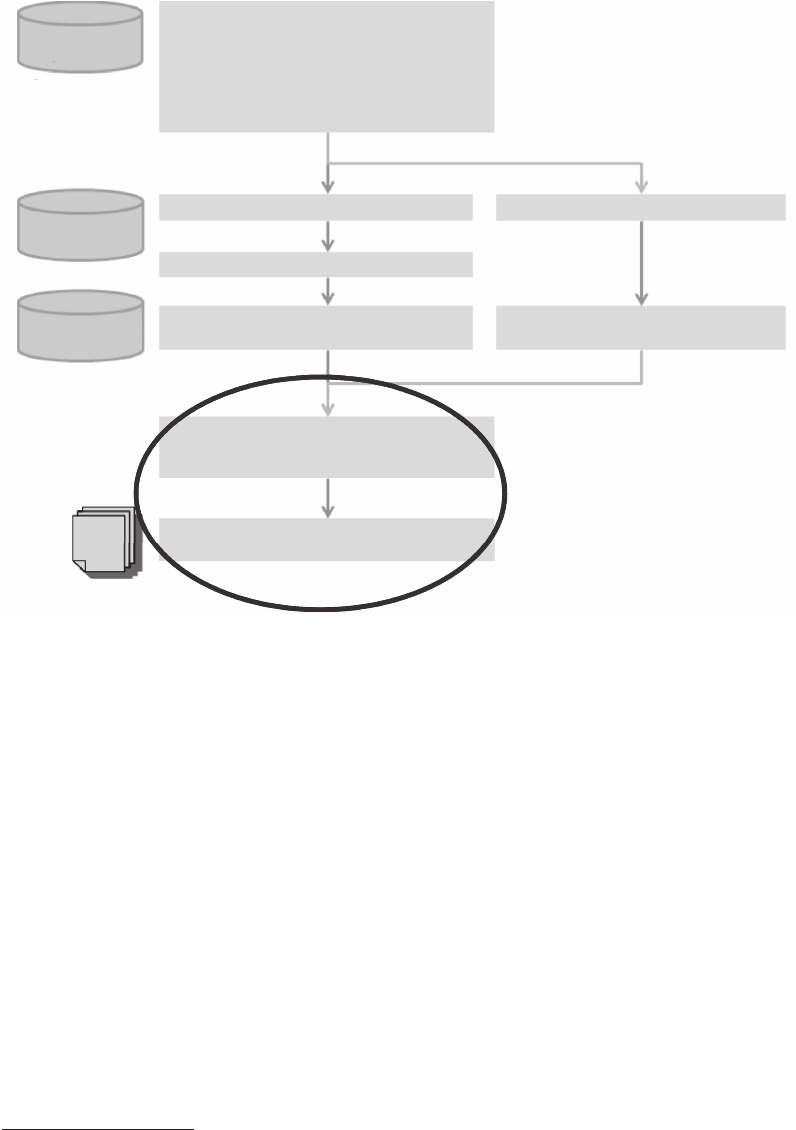
239
17
Aggregate Loss Modelling
In Chapter 6, we introduced the scientic basis for the stochastic modelling of risk and
weexplored the implications of the two main types of aggregate loss models, the individ-
ual risk model and the collective risk model. We then devoted several chapters (Chapters
7 through 16) to creating the building blocks for these aggregate loss models: a frequency
model and a severity model.
Based on the frequency and the severity models that we have built, we already know
how to calculate some simple statistics for the aggregate loss model: for example, the
mean of the aggregate model is simply the mean claim count times the mean loss amount.
However, to make sensible risk-management decisions, we need to know the full aggre-
gate loss distribution so that we can answer questions such as, ‘What is the amount the
company is going to lose in a very bad year, for example, with a probability of 1%?’
This problem is very difcult to solve exactly through analytical formulae. In this chap-
ter, we will explain why this is the case, and how it is possible to get around the issue by
using approximate solutions, the most famous of which is the Monte Carlo simulation.
Figure17.1 puts this step into the context of the risk costing process.
17.1 ‘Exact’ Solution for the Collective Risk Model
Calculating the full distribution of the aggregate loss amount S is a tough problem because,
except in a few cases, it cannot be solved analytically. The cumulative distribution function
of S, F
S
(s), can be expressed as follows:
F
S
(s) = Pr(X
1
+ … + X
N
≤ s) (17.1)
There are two difculties here: rst of all, we have a sum of random variables of which
we know the distribution F
X
(x), and the distribution of the sum of random variables is
a complicated function of the individual distribution, technically called a convolution.
Second, the number N over which the sum must go is itself a random variable, and we
need to take into account all possible values of N in the calculation.
Let us start by addressing the second problem rst: because the different values of N
correspond to mutually exclusive cases, we can write the probability as a weighted sum of
the probability of mutually exclusive events:
Fs XXsNnX
Xs
SN n
n
() Pr()Pr()Pr
()
=+…+ ≤= =+…+ ≤
=
11
0
∞∞
∑
(17.2)

240 Pricing in General Insurance
Now the problem has been reduced to calculating convolutions of a xed number of vari-
ables, and Equation 17.2 can be written as
Fs NnFs
SX
n
n
() ()Pr()
()
==
=
∞
∑
*
0
(17.3)
where (F
X
(s))*
n
is dened recursively as follows (see, for example, Klugman et al. 2008):
• (F
X
(s))*
0
= H(s), where H(s) is the Heaviside step function, dened as 1 for s ≥ 0 and
0 elsewhere
•
((
)) (( ))
()
Fs Fs
sdFs
X
n
X
n
X
**
=−
′′
−
−∞
∞
∫
1
, which can be written as
() (() (Fs Fs
X
n
X
*
=−
∞
∫
0
′′
′
−
sfsds
n
X
)) ()*
1
when the severity distribution is continuous and with zero prob-
ability for negative losses*
*
Note that in the continuous case (F
X
(s))
*n
is dened as the convolution of (F
X
(s))
*n−1
with f
X
(s) rather than with
F
X
(s), so we should not speak of (F
X
(s))
*n
as the n-fold convolution of F
X
(s) as it is sometimes done.
Individual
loss data
Assumptions on
– Loss inflation
– Cu
rrency conversion
– …
Exposure
data
Portfolio/market
information
Data preparation
– Data checking
– Data cleansing
– Data transformation
– Claims revaluation and currency conversion
– Data summarisation
– Calculation of simple statistics
Inputs to frequency/severity analysis
Adjust historical claim counts for IBNR
Adjust for exposure/profile changes
Select severity distribution and
calibrate parameters
Select frequency distribution and
calibrate parameters
Adjust loss amounts for IBNER
Severity model
Frequency mode
l
regate distribution
e. g. Monte Carlo simulation, Fast Fourier
transform, Panjer recursion…
Gross aggregate loss model
Allocate losses between (re)insurer and
(re)insured
Cover
data
Estimate gross agg
Ceded/retained aggregate loss model
FIGURE 17.1
The Monte Carlo simulation (or one of the other methods outlined in this chapter) allows us to produce an
aggregate loss model based on a frequency and severity model; it also allows us to calculate the distribution of
ceded and retained losses based on the policy coverage.
Get Pricing in General Insurance now with the O’Reilly learning platform.
O’Reilly members experience books, live events, courses curated by job role, and more from O’Reilly and nearly 200 top publishers.

